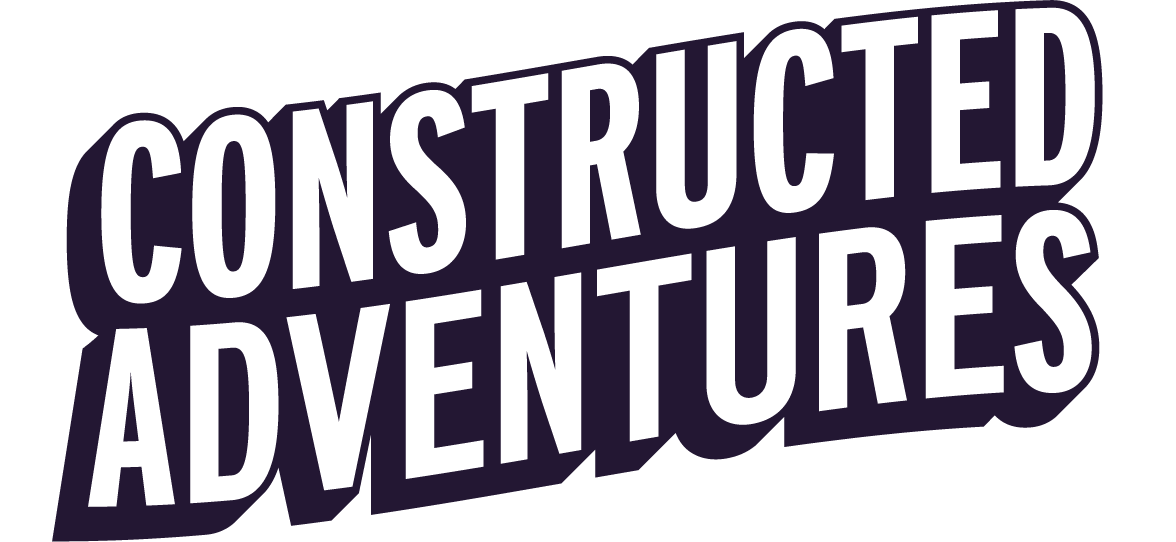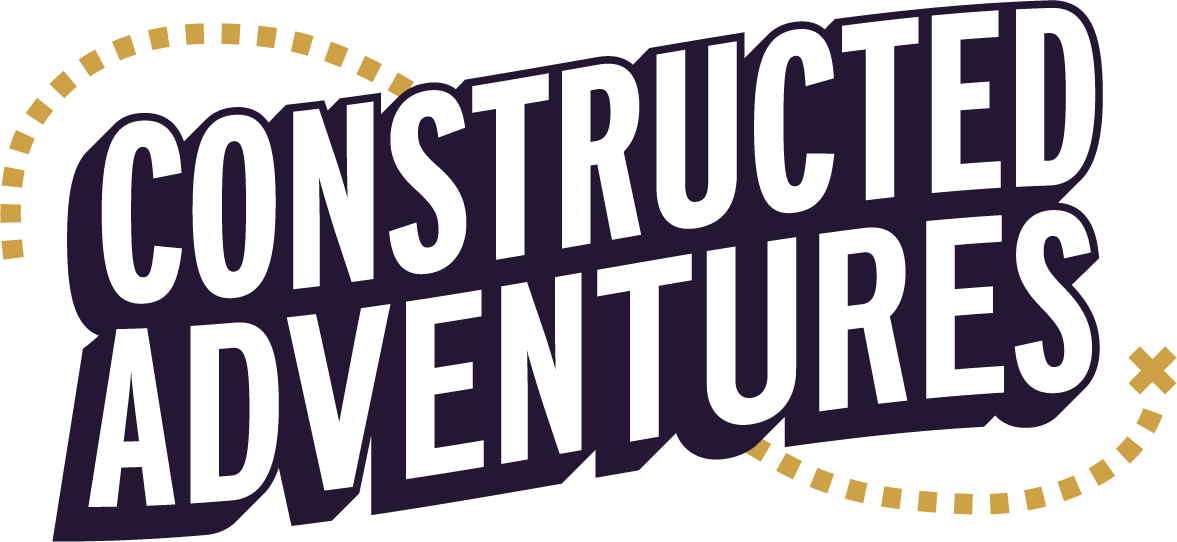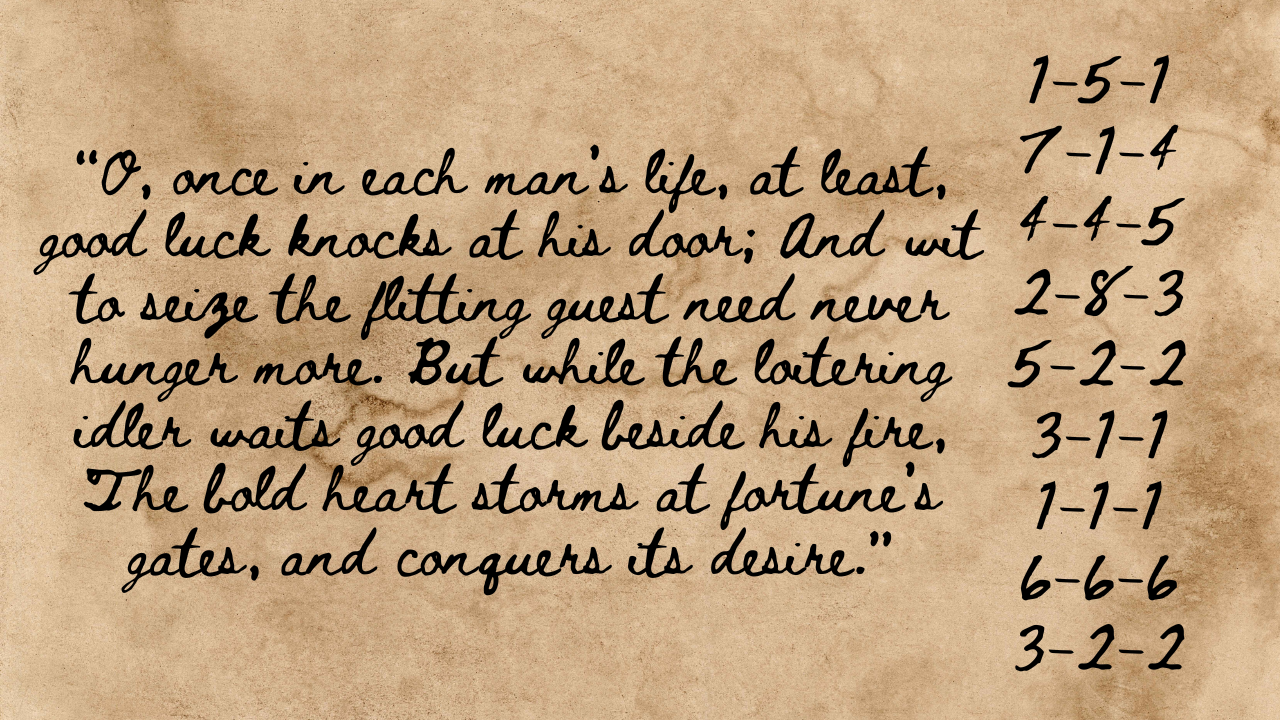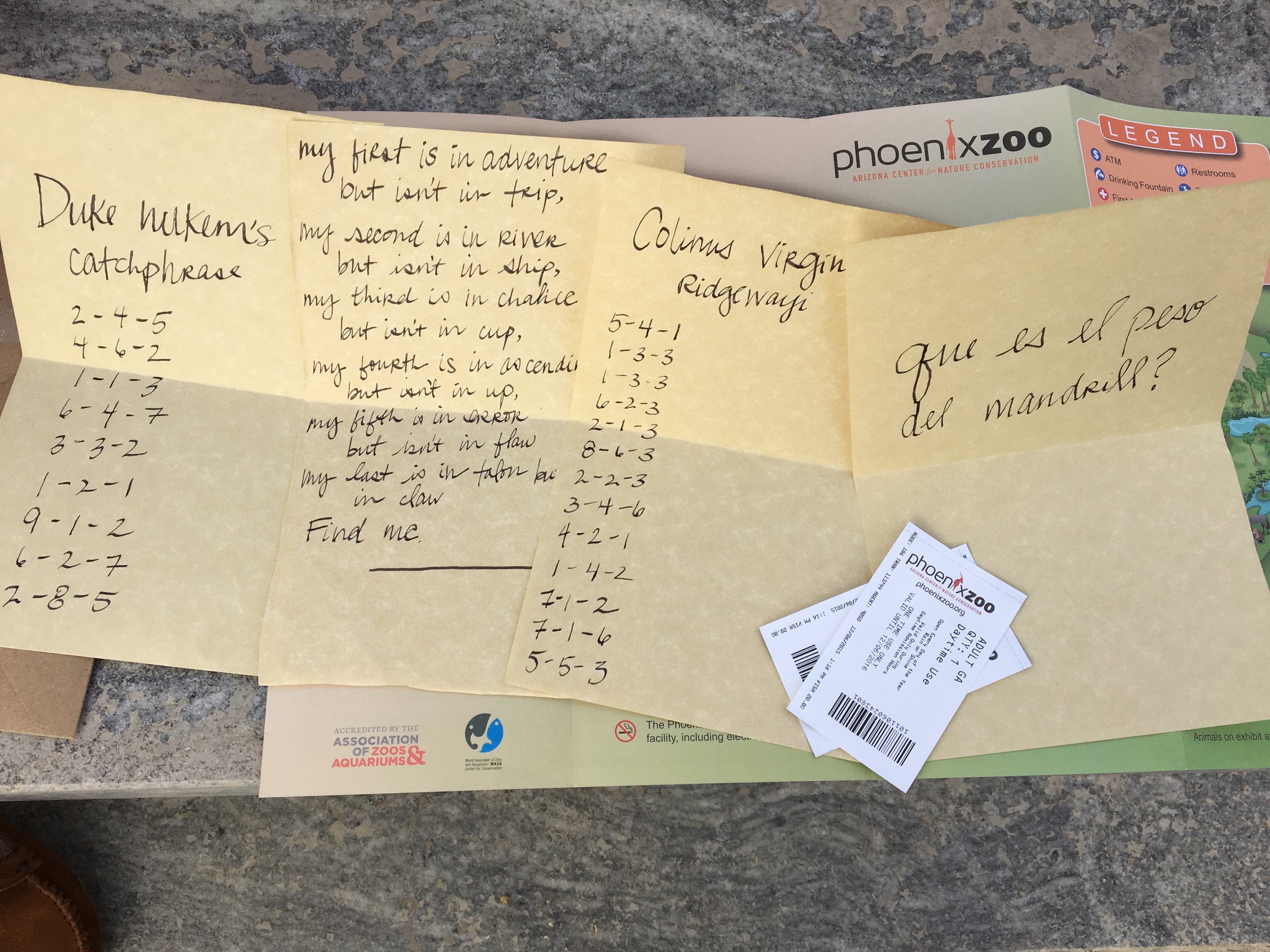Method No. 3: The Decode
YOU OPEN THE ENVELOPE THE STRANGER HANDED YOU. THERE'S A LOCATION AND A SERIES OF NUMBERS AND DASHES.
"Head back To the statue of the man with the outstretched hand. Use these numbers: Line - Word - letter on the plaque to figure out where to go next." You rush back to tHe statue and start decoding the messagE hidden in plain sight...
Decodes are a fantastic way to wrap your adventure in mystery, give someone a challenge, or just buy yourself some time to place the next clue!
You can create an adventure entirely around decoding a Message, Or you can bury the clues to the next location in code!
I'll staRt with my next big rule:
Rule NO. 3: Make Instructions Clear
The challEnge should be about decoding the message, not figuring out what the encryption means or what to do next.
It’s always worth remembering that everyone’s brains work differently. Never assume that your Target’s brain will make the same connections tHat your brain does. Include a card with instructions alongside the encrypted message.
Super Mario World is a masterpiece. The challenge comes from the gameplay. The controls are intuitive.
I LIKE TO BUILD OUT DECODES LIKE LEVELS IN A VIDEO GAME:
Level 1: Learn how to run
Level 2: Learn how to jump
Level 3: Learn the run+jump combo.
Successful games are fun because they’re challenging, not tedious.
You should always be wary of plummEting the adventure into a frustrating mess. If your target has to decode an entire page of instRuctions, they’ll be banging their head against the wall by the end of the first line. Keep this in mind when you're figuring out what part of your adventure should be a decode. If a certain part involves a lot of instruction, make it a handoff or dead drop. Encrypt the simple things like passwords or restaurant namEs.
THE OTTENDORF CYPHER
I’m going to start with my favorite decode of all time. It's simple, elegant, and can be uSed anywhere. It's the Ottendorf Cypher (also called a book cypher and sometimes confused with the Arnold cypher). You may be familiar with this if you’ve seen the greatest movie of all time: National Treasure. The Ottendorf Cypher was on the back of the Declaration of Independence. IT works like this:
You’ll use a small series of numbers combined with a block of text which points to a certain letter.
The most common way to do this is to use a page out of a book. In tHis case you'll use three numbers: line - word - letter.
HERE'S A TEST!
Use my favorite quote and the numbErs to the right to decode the message! The answer will be at the bottom of the post!
As you're sitting there poking at your phone or computer screen,
Be aware of how quickly your brain starts to glaze over. You want to make sure your target isn’t sitting there decoding one absurdly long message for 45 minutes. As an example, I’lL use one of the sections from Adventure No. 1: The Scottsman.
My players picked up a big envelope with two tickets to the zoo and four separate slips of paper. Each slip of paper had a clue to an animal and a sequence of numbers. One clue said “Duke Nukem’s Catchphrase." The answer is “Hail to the king, baby.” Once The Scottsman and hiS girlfriend arrived at the Lion pen (king of the jungle) they used the only plaque at the lion pen to decode the mesSage.
I’m going to interject verY quickly to remind you of Rule No. 2: Know your Target
I knew that The Scottsman was an avid video-gamer (like me!). The Duke Nukem clue was a challenge that he cOuld overcome due to prior knowledge. This was a fold added that really made the adventure feel like it was his to conquer.
Once the target and his girlfriend found all four animal pens and decoded the message it read “DIEGO POPS ARRIVE AT 11:30." This gave them a cUshion to enjoy their time at the zoo before their lunch reservation! It also gave a nice buffer to allow plenty of time in case the clues took longer than expected to solve.
So why did I choose this decode here? Multiple reasons:
Firstly, it’s fun and simple enough to solve.
Secondly, it mitigates the risk. There is no way the brass informational plaques on animal pens at the zoo are going to change between my scouting trip three weeks prior and the day of the adventure.
Finally, this entire part of the adventure was self-contained. The moment my targets grabbed the envelope with the zoo tickets, I knew that my next location was Diego Pops at 11:30am (and even then, I just gave the restaurant staff a credit card for payment in advance and left them the envelope).
Decodes can be designed to give some cushion in your day. They free you up in caSe something down the line needs to be updated or you need to grab a bite to eat.
The Scottsman and his girlfriend picked up a dead drop envelope to get them to the zoo, unraveled a decode throughout the zoo, and then were delivered a handoff envelope at the restaurant.
It's time for your homework.
Let’s send someone on a 4-location adventure!
Start with a box or envElope delivered to them. You can also do my personal favorite: place the chest on the door step, ring the doorbell a bunch of times and sprint away.
The first location should be somewhere nearby. Pick a place that your target is familiar with (a local park is a fantastic place) where you can place a dead drop envelope and no one will steal it.
Inside that envelope, you want to pick a great location. It could be a zoo, park with lots of art installations, or museum. The most important thing is to make sure there are a bunch of permanent fixtures with text on them.
You will fill this envelope with tickets to the location. Then you'll create simple clues to lead them from point to point. You'll also create a fun Ottendorf Cypher to go with Each installation. The answer will spell out the next location and arrival time.
Finally pick a restaurant that they'll go to, reach out to management, pay in advance, and give them the last clue there.
You can have the adventure end with a surprise or just send them back home to you.
Pro tip:
When you go to your location to scout, just take pictures of each plaque and encode the cypher when you get home. Seriously though, everything has some sort of plaque on it.
Happy hunting!
Answer to the Cypher: "meet at one"




